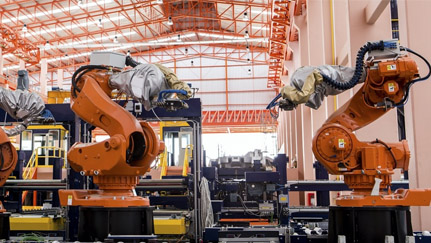Subscribe to our newsletter for timely content in your inbox

Find out what your business can do to minimize the hazards involved with using robotic machinery.
While an increase in production is associated with robotic use, it also may increase the risk of serious injuries or death to workers.1 These robot types could be industrial robots or collaborative robots, which work alongside workers. Collaborative Robots may be “safer” with presence sensors to cut power if they detect a person in the work environment. However, the National Institute for Occupational Safety and Health (NIOSH) identified 61 robot-related deaths in the BLS Census of Fatal Occupational Injuries (CFOI) database, averaging about 3 fatalities per year. The types of injury involved can include crushing, amputations, pinning, burns, striking impact, and others.
As an employer you have the responsibility to provide your employees with a workplace that is free from recognized hazards that are likely to cause death or serious physical harm to employees. Ensuring a safe workplace is not only the law in the U.S., but also good business. So, what should you do?
As an ethical employer, it is vital that the health and safety of your workers and others who may be on your site is protected. Ensure you are training employees, and safeguard those that lack safety knowledge from making potential contact with robotic equipment. By doing this, unneeded injuries and financial losses can be avoided.